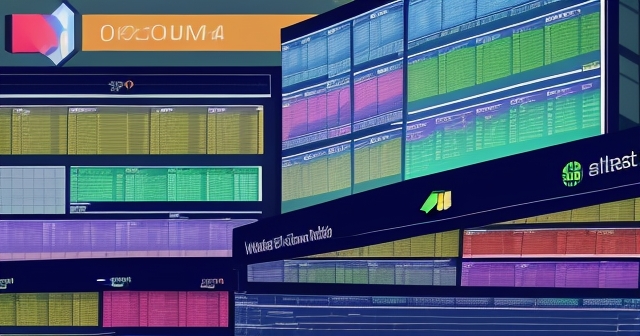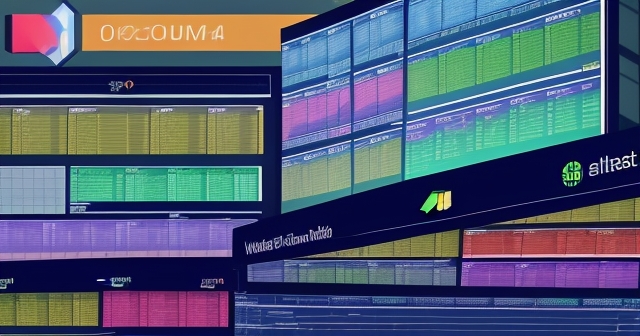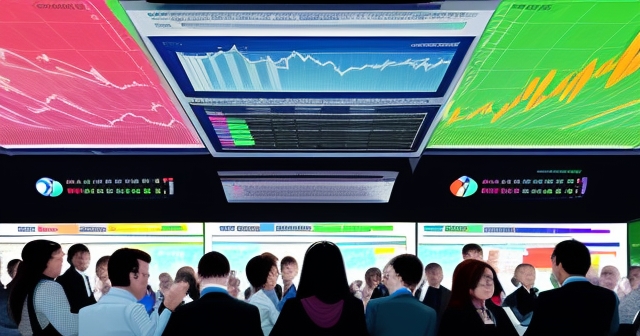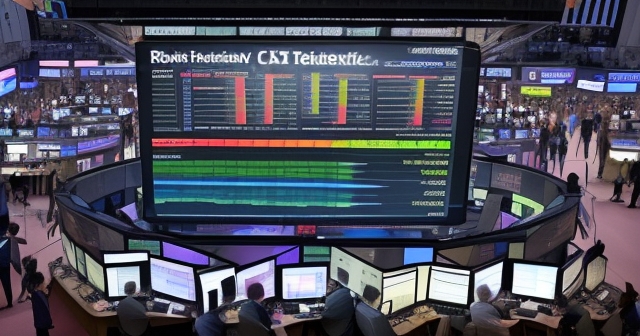
What is US30? Discover Key Insights About the Dow Jones Industrial Average
Table of Contents
ToggleIntroduction: Unveiling the US30 Index, Your Gateway to Understanding Top US Stocks
Welcome to our exploration of one of the world’s most-watched financial benchmarks: the US30 index. Perhaps you’ve heard it called by its more famous name, the Dow Jones Industrial Average. For new investors, or even seasoned traders looking for a deeper understanding, grasping what this index represents and what drives its value is absolutely fundamental to navigating the US stock market. We’re here to guide you through its intricacies, much like an experienced hand helping you chart your course.

Think of the US30 as a snapshot, a highly specific barometer for a significant slice of the American economy. It doesn’t track the *entire* market, but rather focuses on a select group of companies – 30 of the largest and most influential corporations registered and headquartered within the United States. Their combined performance, as measured by this index, offers valuable insights into market sentiment and the health of key industrial sectors.
- The US30 index includes 30 leading US companies.
- The index offers insights into market sentiment and economic health.
- It primarily tracks large corporations across various sectors.
Understanding the US30 isn’t just about knowing a number; it’s about decoding the forces that cause that number to rise and fall. What makes these 30 companies so special? How is the index calculated? And most importantly, what external events and internal economic signals should you watch to anticipate its movements? We will delve into these questions together, building your knowledge piece by piece, so you can look at the US30 quote each day and see not just points, but a story unfolding about the global economy.
More Than Just a Number: The Official Name – Dow Jones Industrial Average
Let’s clarify the identity right from the start. The US30 is, officially, the Dow Jones Industrial Average (DJIA). It’s one of the oldest and most recognized stock market indices globally, created back in 1896 by Charles Dow and Edward Jones. The “Industrial” part of its name is largely historical; while it originally comprised primarily industrial companies, its constituents today represent a broad range of sectors, including technology, finance, healthcare, and consumer goods. So, while the name persists, the index’s composition has evolved significantly over the decades to reflect the changing landscape of the American corporate world.
Why is it still called the Dow Jones? Tradition and recognition. It’s a brand name in itself. When financial news reports on “the Dow,” they are almost certainly referring to this index. For traders and investors, knowing that “US30,” “Dow Jones Industrial Average,” and often simply “the Dow” or “Dow 30” all point to the same benchmark is crucial for clear communication and analysis. It serves as a shorthand for discussing the performance of these 30 titan companies and, by extension, broader market sentiment.
Despite its historical roots, the Dow remains incredibly relevant. Many investors, both large institutions and individual traders like yourself, track its movements daily to gauge the market’s mood. Its long history provides a rich dataset for analysis, allowing us to study how market forces have impacted these leading companies over more than a century. This historical perspective, coupled with its current status as a major benchmark, makes the Dow Jones Industrial Average (US30) an essential component of any serious market study.

The Chosen Thirty: Composition of the US30 Index
So, who are these 30 companies that hold such sway over a major global index? They are not static; the list changes periodically as companies grow, shrink, merge, or are replaced by others deemed more representative of the current US economy. Selection for the Dow is not based purely on quantitative rules (like market capitalization alone, which is common for other indices like the S&P 500). Instead, the selection committee, managed by S&P Dow Jones Indices, uses qualitative criteria, focusing on companies with excellent reputations, sustained growth, and broad investor interest. They aim for a selection that provides adequate representation of different sectors of the US economy.
| Company Name | Sector | Market Influence |
|---|---|---|
| Apple | Technology | High |
| Microsoft | Technology | High |
| Walt Disney | Entertainment | Moderate |
The specific companies included at any given time represent some of the largest and most widely recognized names in the world. Think of companies like Apple, Microsoft, Goldman Sachs, Walt Disney, and Boeing, among others. While these names are familiar, it’s important to remember that inclusion is a status granted by the committee, not an automatic right based solely on size. This discretion in selection adds another layer to understanding why certain companies are in the Dow and others, equally large, are not.
Periodically, there will be changes – a company might be removed and another added. These changes often generate significant news and can impact the stock prices of the companies involved, as index funds and exchange-traded funds (ETFs) that track the Dow must adjust their holdings accordingly. Staying aware of these occasional changes helps you understand the current composition and ensures your analysis is based on the up-to-date list of the “Chosen Thirty.”

A Historical Calculation: The Price-Weighted System Explained
Here is where the US30 index truly stands out and, frankly, can be a bit counter-intuitive if you’re used to other indices. Most major stock indices today, like the S&P 500 or the Nasdaq Composite, are calculated based on market capitalization. This means companies are weighted according to their total market value (share price multiplied by the number of outstanding shares). Larger companies, by market cap, have a greater influence on the index’s movement.
The Dow Jones Industrial Average, however, uses a price-weighted calculation method. What does this mean in practice? It means the index value is calculated by summing the stock prices of all 30 constituent companies and then dividing by a special number called the Dow Divisor. Initially, the divisor was simply the number of companies (30), making it a simple average. But over time, stock splits, dividends, and company changes require adjustments to the divisor to prevent these events from artificially changing the index value. The divisor is now much smaller than 30.
- The price-weighted method causes stock price changes to disproportionately affect the index.
- A change in high-priced stocks has a greater impact than changes in lower-priced stocks.
- This method contrasts with market-cap weighted indices, where total company value drives influence.
The critical consequence of being price-weighted is this: a one-dollar change in the stock price of a company trading at $500 has a much larger impact on the index value than a one-dollar change in the stock price of a company trading at $100. The *percentage* change might be the same (e.g., 1%), but the *absolute dollar change* is what matters in a price-weighted index. This is a key concept to internalize, as it directly affects how you interpret the drivers of the US30’s daily moves.
Decoding the Weight: Why Price Matters More Than Market Cap
Let’s expand on the implications of the price-weighted system because it’s a fundamental characteristic that differentiates the Dow from other major benchmarks. In a market-cap weighted index, a company with a total market value of $1 trillion will have a far greater impact than a company with a $100 billion market value, even if the smaller company’s share price is higher. But in the US30, the opposite is true regarding price.
Consider two hypothetical companies in the Dow: Company A trading at $500 per share and Company B trading at $100 per share. If both stocks increase by $5, Company A’s move will influence the index five times as much as Company B’s move, *regardless* of whether Company B is significantly larger in terms of total market capitalization. This means a company with a very high share price, even if it’s not the largest by market cap, can exert considerable influence over the index’s direction.
As the provided data highlighted, a company like UnitedHealth Group Inc., due to its high share price, historically held a significant weight within the US30, often exceeding 10% as of certain points in time (like August 2022 mentioned in the data). This illustrates perfectly how the price-weighted methodology gives disproportionate influence to stocks with high nominal prices. For you as an analyst or trader, this means when you’re watching the US30, paying close attention to the price movements of its highest-priced constituents is particularly important, as they will contribute most significantly to the index’s daily point change.
External Pressures: Macroeconomic and Geopolitical Drivers
Beyond the specific companies, the US30’s performance is deeply intertwined with the broader economic and political landscape, both domestically and globally. These external pressures can act as powerful tides, lifting or lowering the entire index regardless of individual company news.
Macroeconomic forces are fundamental drivers. Issues like inflation, interest rates (more on this later), economic growth (GDP), and consumer confidence directly affect the operating environment for businesses. When inflation is high, it increases costs for companies and erodes purchasing power for consumers. When economic growth is strong, businesses typically see increased demand and profits. General economic uncertainty, fueled by factors like fluctuating energy prices, can make businesses hesitant to invest and consumers cautious about spending, creating headwinds for the market. Tariffs and trade disputes, while sometimes categorized under policy, act macroeconomically by disrupting supply chains and altering the cost of goods.
| Macroeconomic Factors | Effects on US30 |
|---|---|
| Inflation | Increases costs, reduces purchasing power |
| Interest Rates | Affects borrowing costs, influences investments |
| Economic Growth (GDP) | Indicates demand and profitability potential |
Geopolitical events also cast long shadows over the market. Conflict in key regions (like the “war” mentioned in the data), political unrest, and significant international policy shifts can inject substantial volatility. These events create uncertainty, impacting investor sentiment and prompting shifts from riskier assets like stocks towards safer havens. Major geopolitical developments involving the US, given that the Dow represents leading US corporations, are particularly potent in their ability to move the index. Understanding these global dynamics is essential for forecasting potential shifts in the US30.
Domestic Signals: The Impact of Key US Economic Data
While global events matter, the US30 is ultimately a reflection of major US companies, making domestic US economic data critically important. These data releases provide concrete evidence of the health and direction of the American economy, influencing investor expectations about future corporate earnings and interest rate policy.
Key indicators that frequently move the Dow include:
- Unemployment Rates and Jobs Reports: Data like Non-Farm Payrolls provide insight into the strength of the labor market. Low unemployment and strong job growth generally signal a healthy economy, boosting consumer spending and corporate profits.
- Inflation Data (CPI, PPI): The Consumer Price Index (CPI) and Producer Price Index (PPI) measure changes in prices paid by consumers and producers, respectively. High inflation can erode profits (rising costs) and consumer demand (reduced purchasing power), often leading to central bank action to raise interest rates, which can be negative for stocks.
- Retail Sales: This data reflects consumer spending, a major component of the US economy. Strong retail sales suggest healthy demand, positive for companies selling goods and services.
- Manufacturing and Services Indices (PMI): Surveys like the Purchasing Managers’ Index gauge activity in manufacturing and services sectors. Readings above 50 generally indicate expansion, while readings below 50 suggest contraction.
- Housing Data: Indicators like housing starts and existing home sales can provide clues about the health of the construction sector and consumer confidence.
Watching the release schedule for these major data points is crucial. Market participants analyze whether the actual numbers meet, exceed, or fall short of expectations. Surprises in the data can lead to swift and significant reactions in the US30, as traders adjust their outlook on the economy and future policy.
Monetary Policy’s Grip: The Role of the FOMC
Perhaps no single entity has as immediate and significant an impact on the US30 as the Federal Open Market Committee (FOMC). This is the monetary policy-setting body of the United States Federal Reserve. Their decisions regarding interest rates and the money supply directly influence the cost of borrowing for businesses and consumers, the attractiveness of different investments (stocks vs. bonds), and overall economic liquidity.
The FOMC meets regularly (typically eight times a year) to assess the economic outlook and determine the appropriate stance for monetary policy. Their announcements, particularly regarding changes to the Federal Funds Rate (the target rate for overnight lending between banks), are arguably the most anticipated events on the financial calendar. A decision to raise rates, for example, makes borrowing more expensive, potentially slowing economic growth and making bond investments more attractive relative to stocks, which can put downward pressure on the Dow. Conversely, cutting rates or implementing stimulating measures like quantitative easing can lower borrowing costs and inject liquidity, often providing a tailwind for stock prices.
Beyond interest rates, the FOMC’s forward guidance – their statements about their future intentions and economic outlook – is also closely scrutinized. Markets react not just to the action taken, but also to the language used, trying to infer the path of policy for months or years to come. Understanding the Fed’s dual mandate (maximum employment and stable prices) and how they are interpreting current economic data is key to anticipating their actions and their potential effect on the US30.
Tracking the Movement: Essential Market Data Points
When you look up the US30, you’ll typically see a standard set of data points that summarize its performance over a specific period, usually the trading day. Understanding what each of these means is fundamental to interpreting the market’s recent activity:
- Previous Close: This is the final price of the index at the end of the prior trading day. It serves as the baseline for judging today’s performance.
- Open: This is the price of the index at the very beginning of the current trading day. A gap between the Open and Previous Close can indicate significant overnight news or sentiment shifts.
- High: The highest price the index reached during the current trading session.
- Low: The lowest price the index reached during the current trading session. The range between the High and Low shows the volatility for the day.
- Current Price: The real-time (or slightly delayed) price the index is currently trading at.
- Change: The difference between the Current Price and the Previous Close. This is often shown both in absolute points and as a percentage change. A large point change doesn’t necessarily mean a large percentage change if the index value is high, but it’s the metric most commonly cited in headlines (“Dow gains 300 points”).

These data points, along with volume data (though volume is not directly part of the price-weighted calculation, it indicates trading activity) and time stamps (like UTC, which standardizes timing across different regions), provide a numerical summary of the index’s behavior. Tracking these numbers over time, and observing patterns in Opens, Highs, Lows, and Closes, forms the basis of technical analysis for the US30.
Strategies for Engagement: Analyzing and Trading the US30
With an understanding of what the US30 is, how it’s calculated, and what drives its price, you might naturally wonder how investors and traders engage with this index. There are two primary approaches: analysis and trading.
Analysis involves using all the information we’ve discussed – the composition of the 30 companies, the macroeconomic environment, US economic data, FOMC policy, and geopolitical events – to form an opinion about the likely future direction of the index. This is often called fundamental analysis. Simultaneously, many market participants use technical analysis, studying historical price charts, patterns, and indicators (like moving averages, RSI, MACD) to identify trends, potential support and resistance levels, and entry/exit points for trades.
Trading the US30 means taking a position that profits if the index moves in the direction you anticipate. You can’t directly buy the index itself, but you can trade instruments that track its value. Common ways to trade the Dow include futures contracts (often used by larger traders and institutions), options contracts, and Contracts for Difference (CFDs). CFDs allow you to speculate on the price movement of the index without owning the underlying assets, offering flexibility but also involving leverage and risk.
If you are interested in exploring these instruments and potentially trading the US30 or other global indices, choosing the right platform is a crucial first step. You need a broker that offers access to these markets, provides reliable data feeds, and supports your chosen trading strategy.
Navigating the Market: Considerations for Trading the Dow
Trading indices like the US30, especially via instruments like CFDs, requires careful consideration of several factors beyond just predicting direction. The high liquidity and volatility of the Dow can present opportunities but also significant risks, particularly when leverage is involved.
- Understanding leverage is crucial; it amplifies both potential profits and losses.
- Tools like stop-loss orders help manage risk exposure.
- Key market hours, particularly during the US market open, often witness greater volatility.
Furthermore, consider the trading hours for the US30. While based on US stocks, the index is traded globally, often available almost 24 hours a day through instruments like futures and CFDs (with breaks). Understanding the key market hours when volatility is typically highest (e.g., during the US market open) is important for planning your trading activity.
Finally, the choice of your trading platform and broker significantly impacts your trading experience. Look for a platform with robust charting tools for technical analysis, reliable execution speeds, and competitive spreads (the difference between the buy and sell price). Access to research, news feeds, and customer support can also be invaluable, especially when navigating fast-moving markets.
When choosing a trading platform, Moneta Markets‘ flexibility and technological advantages are worth noting. It supports mainstream platforms like MT4, MT5, and Pro Trader, combining high-speed execution with low spread settings to offer a good trading experience.
Conclusion: The US30’s Enduring Significance as a Market Barometer
In wrapping up our deep dive into the US30, it’s clear that this index is far more than just an average of 30 stock prices. It’s a dynamic, historically significant benchmark that provides a specific, price-weighted view of a crucial segment of the US economy. We’ve explored its identity as the Dow Jones Industrial Average, its unique composition, the implications of its price-weighted calculation method, and the complex interplay of macroeconomic factors, US economic data, central bank policy (the FOMC), and geopolitical events that drive its value.

For you, whether a budding investor or a trader seeking deeper insights, understanding the US30 is an invaluable tool. It helps you gauge market sentiment, react to major economic and political developments, and provides a high-liquidity instrument for potential trading opportunities. Remember that while the Dow is widely watched, its price-weighted nature means it tells a slightly different story than market-cap weighted indices. Paying attention to its highest-priced constituents and understanding the specific drivers affecting them and the broader US economy will give you a more nuanced perspective.
Ultimately, the US30 index serves as an enduring barometer. By combining fundamental analysis of the forces we’ve discussed with technical analysis of its price movements, you can build a more informed approach to navigating the opportunities and challenges presented by this influential market benchmark. Keep learning, keep analyzing, and approach the market with a clear strategy informed by solid knowledge.
what is us30FAQ
Q:What does the US30 index represent?
A:The US30 index represents the performance of 30 of the largest and most influential companies in the US stock market.
Q:How is the US30 index calculated?
A:The US30 index is calculated using a price-weighted method, meaning stocks with higher prices have a greater influence on the index’s value.
Q:Why do changes in the US economy impact the US30?
A:Changes in the US economy affect the performance of constituent companies, thereby influencing investor sentiment and the overall index value.
You may also like
Calendar
| 一 | 二 | 三 | 四 | 五 | 六 | 日 |
|---|---|---|---|---|---|---|
| 1 | 2 | 3 | 4 | 5 | 6 | 7 |
| 8 | 9 | 10 | 11 | 12 | 13 | 14 |
| 15 | 16 | 17 | 18 | 19 | 20 | 21 |
| 22 | 23 | 24 | 25 | 26 | 27 | 28 |
| 29 | 30 | 31 | ||||
發佈留言
很抱歉,必須登入網站才能發佈留言。